Time Tripping
Artistic duo unveil powerful retrospective at Dallas Contemporary
Artists David McDermott and Peter McGough, it could be said, were born in the wrong era. Enamored of the past yet predictive of the future, this celebrated duo’s work feels out of time and completely modern.
McDermott and McGough met in the thriving bohemia of 1980s New York and began their career with “time experiment” works, an outgrowth of McDermott's desire to live in another century.
“My partner wanted to live in the past, and he wanted it to be real, without electricity or plumbing,” recalls McGough of their early photographs, produced using 19th-century techniques. “It was easy — I just turned the camera towards him and this world we created.”
Dressing as Victorian dandies and riding in Model T cars, the artists’ lifestyle and the photographs that captured it garnered them initial success, built upon by their homoerotic paintings and activist art.
With four decades of work spanning photography, painting, sculpture, and film, it was time for a U.S. retrospective. Acclaimed curator Alison M. Gingeras (formerly of the Guggenheim, National Museum of Modern Art and Centre Pompidou) met McGough at a party, and an exhibition began to take shape.
“I’ve Seen the Future and I’m Not Going” is on view now at the Dallas Contemporary.
One of three timely exhibitions at the Contemporary (Kiki Smith examines the stages of a woman’s life in “Mortal,” while contemporary Asian artists explore environmental disaster in “Invisible Cities”), “I’ve Seen the Future and I’m Not Going” is a queer revision of history and culture encompassing “homoeroticism and scandal, kind of like an A&E show,” jokes McGough.
After their early time experiments, the artists expanded their practice with paintings that garnered them a place in the Whitney Biennial. Produced in the ‘80s and inspired by old-timey advertising, the pieces gathered in A Friend of Dorothy, 1943 transform slurs such as “faggot,” “queer,” and “pansy” into candy-colored canvases that amuse as much as they shock.
“We were always doing something that wasn’t about making a mush on a painting,” explains McGough. “I guess it is political, but it just seems now it’s undeniable. I painted a painting of a glory hole with ‘Queer’ written on it because I just thought it was funny. The thing is we’re not decorators — you know artists have turned into decorators with these abstract paintings.”
By the 1990s, the artists were on a downswing, with tax problems leading McDermott to decamp to Ireland and McGough facing an HIV diagnosis. The duo’s “AIDS Chapel” room rewrites the narrative of the disease with a more hopeful message, and their late-‘90s “Conspiracy Paintings” offer a social-political critique wrapped up in the illustrative style of 19th-century woodcuts. When viewed together, these works both commemorate and question the oppression of society.
McGough had returned to the United States when McDermott suggested re-creating a series of portraits of Adolf Hitler, a selection of which fill the final room of the exhibition. Because he had visited a small gay museum in Berlin memorializing those killed in concentration camps, McGough decided to take his partner’s idea and transform it into an elegy for those who died at the hands of the Nazis.
“Each one of those portraits of that fucking jerk is the name of somebody who would never ever be remembered," he says. "Everybody counts.”
This could be a motif of “I’ve Seen the Future…” and of McDermott and McGough’s output at large. From their earliest images to their current “Oscar Wilde Temple,” on view at New York’s Church of the Village, they traffic heavily in remembrance and the power of art to move people, no matter how difficult the subject matter.
“I love what I do, even when they hate me and don’t buy it and badmouth me,” says McGough. “To express oneself and say, ‘This is who I am’ no matter what you do is so important. I’m thrilled that I made these paintings, because I wasn’t a bore. Oscar Wilde said the worst crime is being a bore. I think for people coming to see this show I hope it inspires them to live life to its fullest, whatever they want to do.”
“I’ve Seen the Future and I’m Not Going” is on exhibit through December 17 at the Dallas Contemporary. Admission is free.
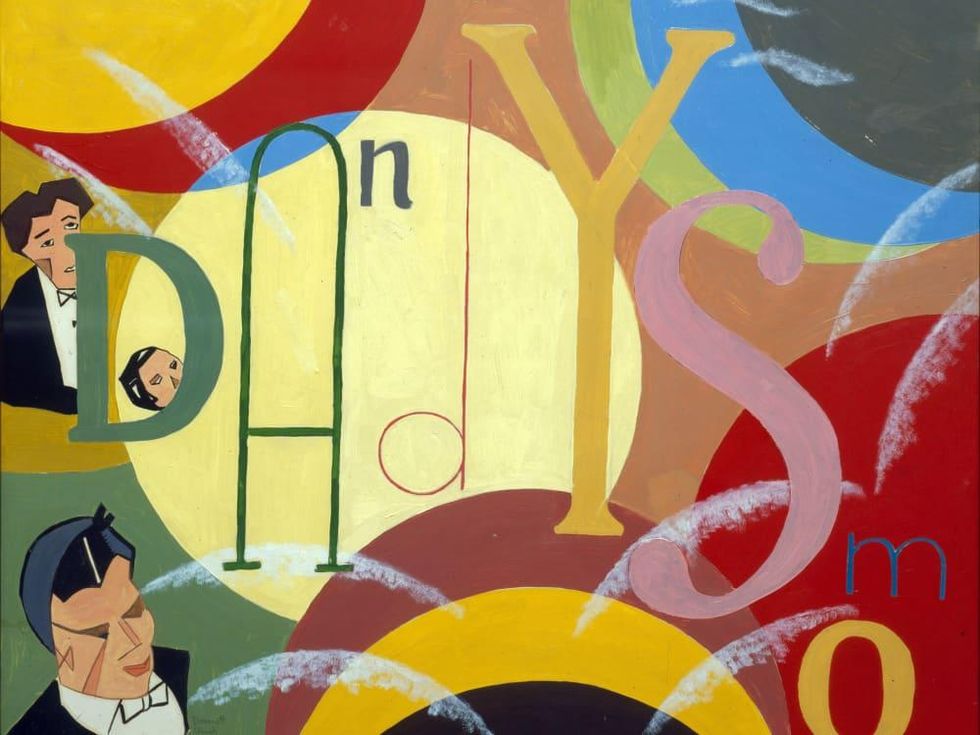
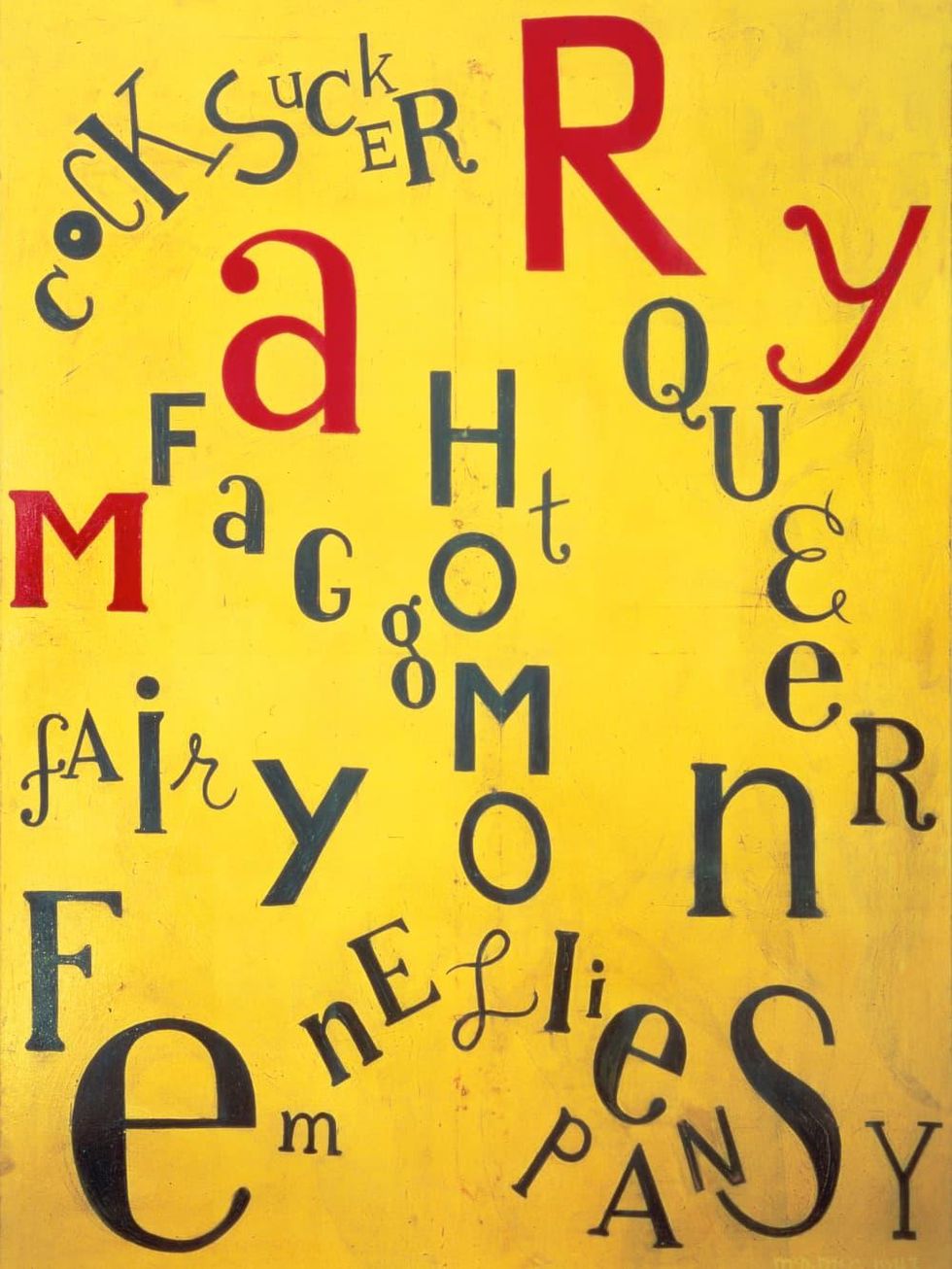
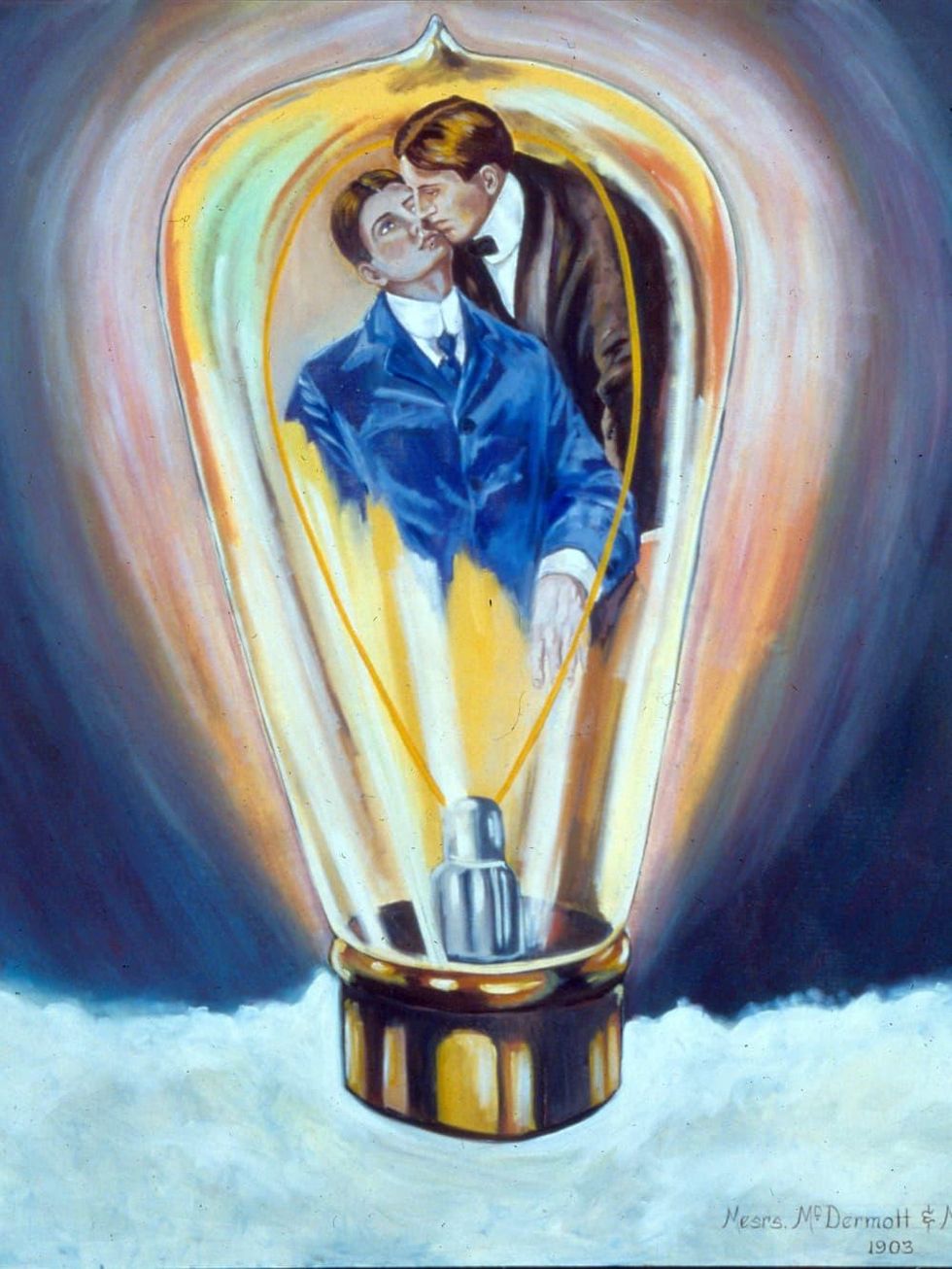

 Guy Fieri and Oren Salomon Courtesy photo
Guy Fieri and Oren Salomon Courtesy photo 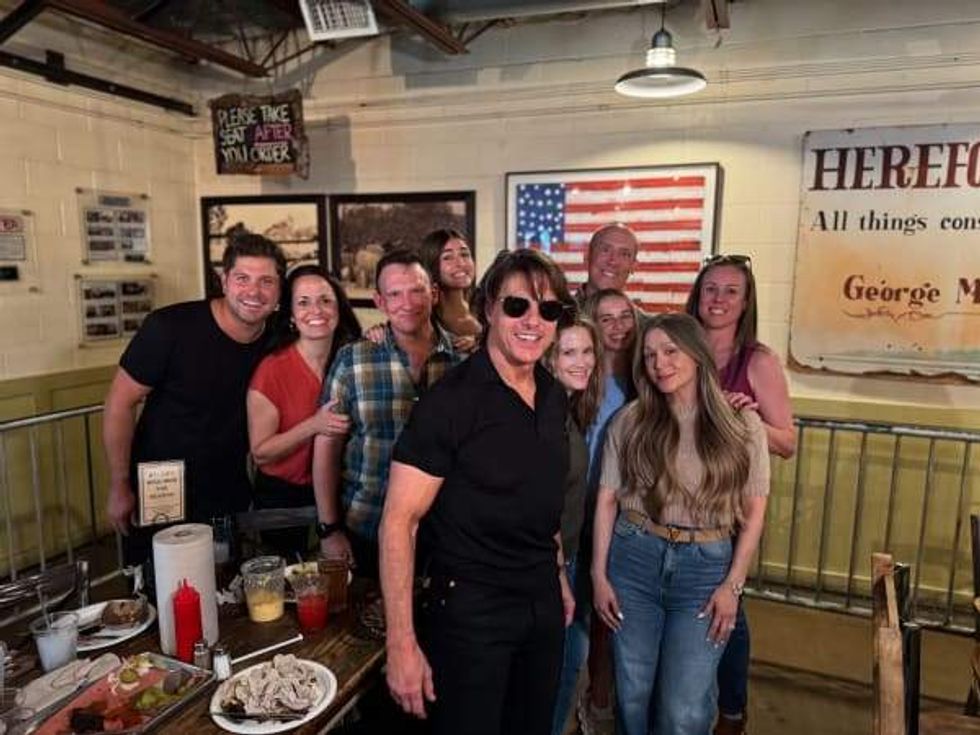 Tom Cruise in Dallas Tribal Cafe
Tom Cruise in Dallas Tribal Cafe 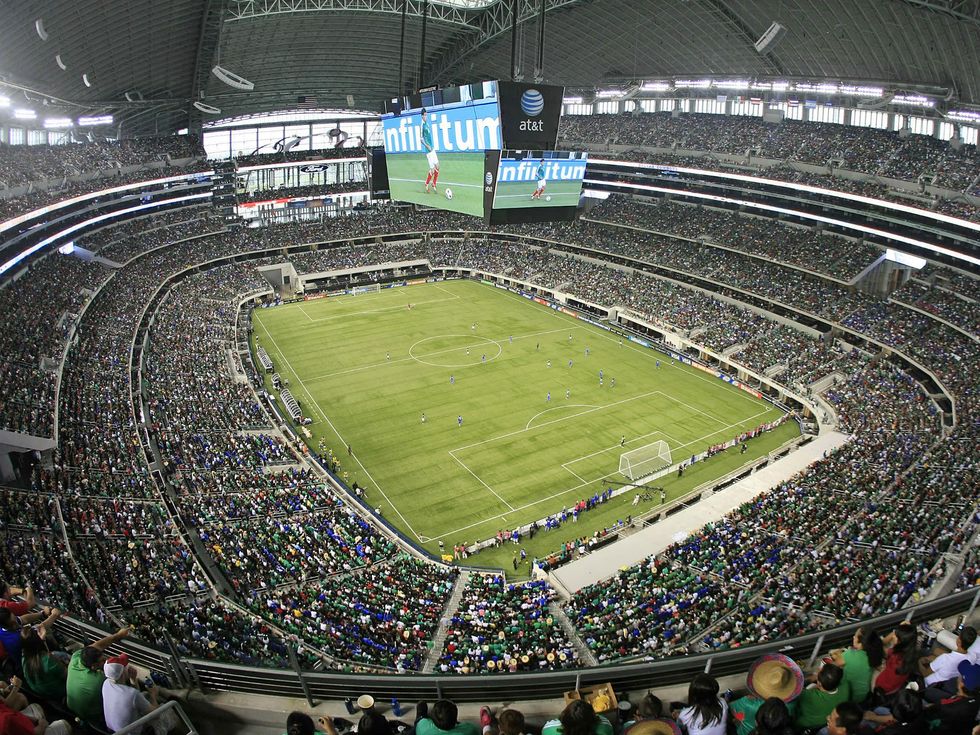 The 2026 FIFA World Cup will be played at AT&T Stadium in Arlington and other venues in the U.S., Mexico, and Canada. Photo courtesy of CONCACAF
The 2026 FIFA World Cup will be played at AT&T Stadium in Arlington and other venues in the U.S., Mexico, and Canada. Photo courtesy of CONCACAF 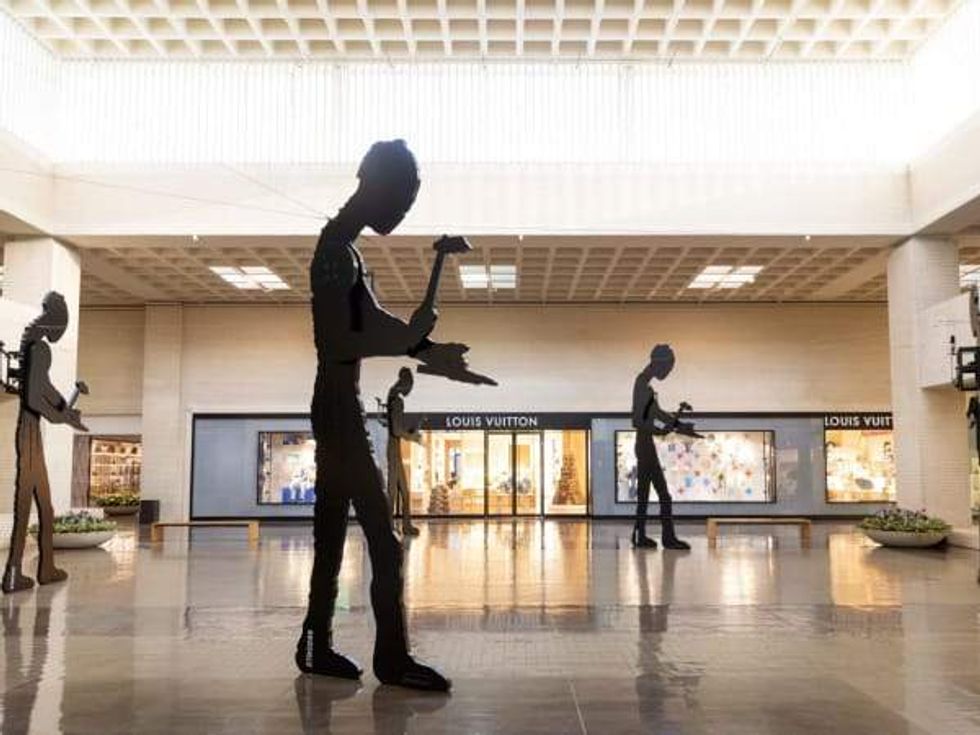 Hammering Men, 1982 NorthPark Center
Hammering Men, 1982 NorthPark Center